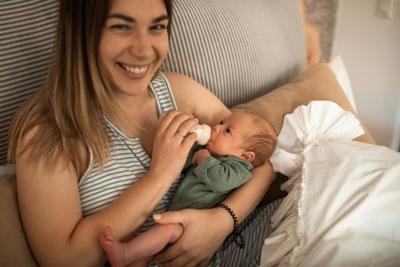
Keeping baby feeding equipment clean is essential for ensuring that every meal is safe and hygienic. Babies have developing immune systems, making them more susceptible to germs that could cause illness. Clean bottles, nipples, and other feeding tools are critical in supporting their health. Parents can easily keep these items sanitary and ready for use with a few simple practices. Here are the best practices for cleaning feeding equipment for babies.
Wash Hands Thoroughly Before Cleaning
Parents should wash their hands thoroughly before handling baby feeding equipment. This prevents the transfer of germs onto the items, keeping them as clean as possible. Handwashing with soap and water for at least 20 seconds is ideal. By making handwashing a habit before cleaning feeding supplies, parents can ensure that no bacteria or dirt will come into contact with the baby’s items.
Use the Right Tools for Cleaning
Using the right cleaning tools, like bottle brushes and nipple cleaners, makes a big difference. These tools can reach areas that regular sponges may miss, ensuring every corner of the bottle is scrubbed. For example, the best baby bottles with handles are easier to clean with specialized brushes that can clean around the handles and inside the bottle thoroughly. These brushes are designed to reach deep areas of the bottle, where milk residue might otherwise linger, reducing the risk of bacterial growth.
Rinse Immediately After Feeding
One of the simplest ways to keep feeding equipment clean is to rinse it immediately after use. This prevents milk or formula from drying and sticking to the bottle, making it easier to wash later. Rinsing right away also reduces the risk of bacteria developing. Even if the bottles and nipples will be washed later, rinsing them in warm water as soon as possible helps maintain a basic level of cleanliness until a thorough wash can be done.
Use Hot, Soapy Water for Deep Cleaning
Hot, soapy water is essential for killing germs and removing any lingering milk or formula residue. Washing each item separately in hot water and using a mild dish soap ensures that all surfaces are cleaned effectively. The soapy water breaks down fat deposits from the milk, which can stick to bottles and nipples. After scrubbing thoroughly, each item should be rinsed in clean water to remove any soap residue, which could be harmful to the baby if ingested.
Consider Sterilizing Bottles and Nipples Regularly
In addition to washing with hot, soapy water, sterilizing bottles and nipples is a valuable step for extra cleanliness. Sterilization can be done using steam sterilizers, boiling water, or microwave-safe bags. This process eliminates bacteria that may still be present after washing, offering added protection. Parents may find it helpful to sterilize feeding items, especially for newborns or babies with weaker immune systems, once a day or every few days for optimal hygiene.
Allow Equipment to Air Dry Completely
After washing and sterilizing, it’s important to let bottles and other feeding equipment air dry completely. Using a clean drying rack is the best method, as it keeps items separate and allows airflow to help them dry more effectively. Avoid using towels to dry these items, as towels can carry bacteria or fibers that may stick to the bottles and nipples. Proper drying helps prevent mold and bacteria growth, keeping each item safe for the next feeding.
Inspect Feeding Equipment Regularly
Regularly inspecting feeding equipment is another best practice to ensure all items remain in good condition. Over time, bottles and nipples can develop cracks, discoloration, or signs of wear that might harbor bacteria. Dr. Talbot's baby bottles, made from durable materials, are designed to withstand frequent cleaning without damage, ensuring safety and longevity. By checking feeding tools regularly, parents can ensure they are using safe, effective equipment for their baby.
Store Clean Equipment Safely
After drying, storing feeding equipment in a clean, dry space helps maintain its cleanliness. A cabinet or drawer designated for baby items works well, as it keeps feeding tools away from other household items and contaminants. Using storage containers or cases can also help keep items organized and dust-free. Proper storage ensures that bottles and nipples stay clean until needed for the next feeding, preventing bacteria buildup between uses.
Proper cleaning habits for baby feeding equipment play a vital role in maintaining a safe and healthy feeding environment. By using the right tools, washing with hot water, sterilizing regularly, and storing items safely, parents can protect their babies from potential infections caused by bacteria. A little extra effort in maintaining cleanliness goes a long way in supporting the health and comfort of both the baby and the parent.





(0) comments
We welcome your comments
Log In
Post a comment as Guest
Keep it Clean. Please avoid obscene, vulgar, lewd, racist or sexually-oriented language.
PLEASE TURN OFF YOUR CAPS LOCK.
Don't Threaten. Threats of harming another person will not be tolerated.
Be Truthful. Don't knowingly lie about anyone or anything.
Be Nice. No racism, sexism or any sort of -ism that is degrading to another person.
Be Proactive. Use the 'Report' link on each comment to let us know of abusive posts.
Share with Us. We'd love to hear eyewitness accounts, the history behind an article.